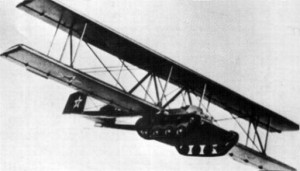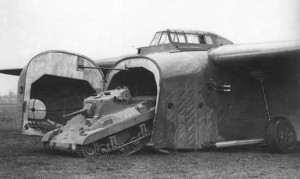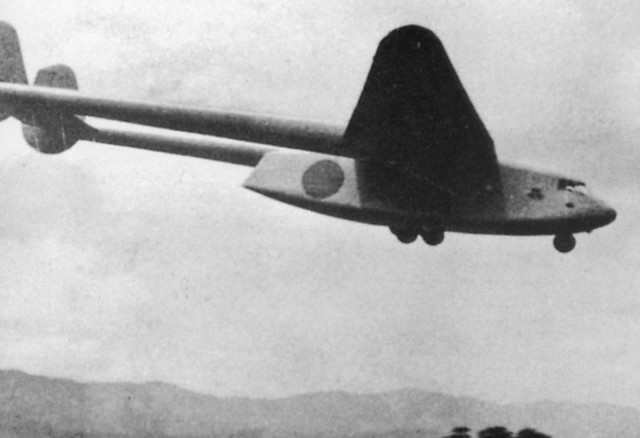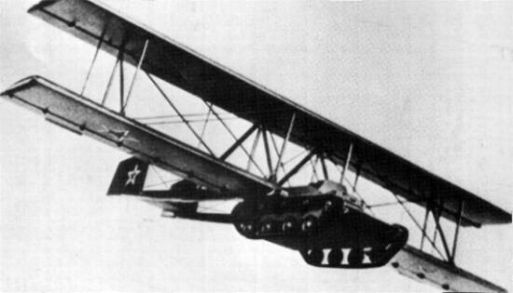
World War I was fought along vast front lines dug into trenches, men “going over the top,” pushing to gain some ground, and dropping down again, a back and forth of agonizing, deadly progress and often stalemate. World War II came along and brought with it mobile warfare with thousands of tanks, aircraft, and other military vehicles rendering old tactics of trench warfare mostly useless.
That being said, machine gun nests, pill boxes, mines, trenches (yes, still around in many places), and many other fortifications and tactics made fighting along a treacherous and often lethal front line common in the war.
For the first few years of WWII in Europe, Germany was mastering mobile warfare and the Allies needed an answer. Paratroopers and soldiers in gliders (large, wooden, motor-less crafts towed behind a bomber and then released to glide men quietly to their destination) could be dropped behind enemy lines, but often with high casualties before and after landing. These troops were also often very scattered and lacked heavy equipment, greatly limiting their capabilities.
So let’s drop a tank behind enemy lines! As wildly impractical as this sounds with any knowledge of WWII-era technological capabilities for airdrops, we have to admire their ambitious attempts. After all, if forces with heavy weaponry could be deployed behind enemy lines, that would be a monumental game changer. It could completely disrupt German strategy and win the war.
Now, the only issue is getting a multi-ton tank to into the sky and then landing it, without damage to the tank or crew, into a strategic location where it can be effective against the enemy. Several countries made attempts. Most projects were abandoned, some worked with minimal success, and others became the inspiration for future projects.
One of the most ambitious attempts was the Russian Antonov A-40 Krylya Tanka (Tank Wings). After attempting a few different methods like strapping a T-27 Tankette beneath a TB-3 bomber to land near the battlefield in the 1930s, the Soviets had Oleg Antonov design a tank with glider wings that could be towed by a bomber and released behind enemy lines.
The tank Antonov used was the T-60 light tank which weighed 5.8 tons before he reduced the weight slightly for flight. To carry this giant hunk of metal through the air, he designed a wood and fabric biplane system with a twin tail and cradle to attach it to the T-60. This had a wingspan of 18 meters (just over 59 ft.) and weighed another 2.2 tons.
On September 2nd, 1942, on an airfield outside of Moscow, the Russians tied a towing cable between the A-40 and a TB-3 bomber. As the bomber took off, things were looking good and the T-60 rose behind it. The TB-3, however, couldn’t handle the several extra tons dragging behind it and had to detach the cable long before reaching an altitude or distance that would allow any kind of useful deployment.
Russian glider pilot Sergei Anokhin expertly floated his soaring tank to the ground, detached its wings, and drove it back to the airfield. The Russians abandoned their flying tank dreams of WWII.
The most successful deployment of tanks by air in WWII was by the British. No, not with the delightful novelty of a true flying tank, but with the General Aircraft Hamilcar Glider. The British used gliders to drop troops behind enemy lines several times during WWII and twice used large Hamilcars loaded with light tanks. Hamilcars, like any glider, were towed behind a bomber and released, leaving it to the pilot to find a relatively smooth place to land the large craft and deploy its men and weaponry.

For D-Day and, more specifically, Operation Tonga (the British airborne operation dropping troops into Normandy June 5-7, 1944), around 30 Hamilcars were used to land anti-tank guns, transport vehicles, and Tetrarch light tanks in Normandy. Twenty Tetrarchs were sent and the ones that made their landing were greatly outclassed by German armor. Only three of these tanks lasted past the first couple months after the landings.
In March 1945, the British used Hamilcars loaded with tanks once more to support the crossing if the Rhine into Germany. The 6th Airborne Infantry Division’s role in Operation Varsity included the use of 440 gliders, 48 being Hamilcars and of those, eight carried M22 Locust Light tanks. Only one of these tanks, however, survived the landings enough to be useful at all.
The British were planning the production of a motorized Hamilcar that would have more range and could be used in the Battle of the Pacific, but the war ended too soon to build them.
The Americans also made a great effort to develop a flying tank in the 1930’s, but ultimately canceled the project, already littered with practical problems, when the engineer, John Walter Christie offered to sell his plans to Soviet Russia.

Christie basically saw the prospect of flying tanks in the way the nuclear deterrent of the Cold War was framed. In a 1932 issue, Modern Mechanics magazine quoted Christie: “The flying tank is a machine to end war. Knowledge of its existence and possession will be a greater guarantee of peace than all the treaties that human ingenuity can concoct. A flock of flying tanks set loose upon an enemy and any war is brought to an abrupt finish” (source: Daily Mail).
By Colin Fraser for War History Online
Sources:
- Daily Mail – Is it a bird? Is it a plane? No, it’s a flying TANK! Experimental vehicles reveal the radical ideas of World War II engineers
- Historic Wings – Flying Tanks, Oh My!
- Wikipedia – Antonov A-40
- All photos sourced from wikipedia.org
